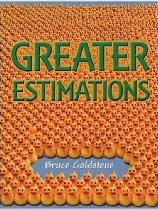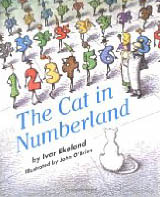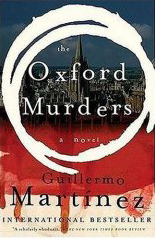Review of Greater Estimations, by Bruce Goldstone

Greater Estimations
by Bruce Goldstone
Henry Holt and Company, New York, 2008. 32 pages.
Starred review.
2009 Sonderbooks Stand-out: #3 Children’s Nonfiction
This book is fascinating. I brought it to a staff meeting, and my co-workers couldn’t resist looking through the pictures. I’d enjoy doing a program around this book.
Greater Estimations presents photographs of large quantities of things — rubber duckies, popcorn, parachuters, honeybees, plastic animals, and many other things — and shows the reader strategies for estimating how many there are. The author also talks about estimating length, height (of buildings), weight (of dogs), area, and volume.
This book can capture your attention for a long time, and if it gets you curious about quantity, the author will have achieved his goal. He also teaches you ways to satisfy that curiosity on your own.
I find myself wishing that Bruce Goldstone had placed some answers in the back of the book. I do appreciate his point that estimation is NOT about getting exact answers. But I do wish he’d given feedback on a few more pages to have some idea if my ability to estimate was improving as a result of his hints.
Anyway, in life you don’t get answers given to you. This book gives you tools to help you figure out an approximate answer to numerical questions all by yourself.
Find this review on the main site at:
www.sonderbooks.com/Childrens_Nonfiction/greater_estimations.html

